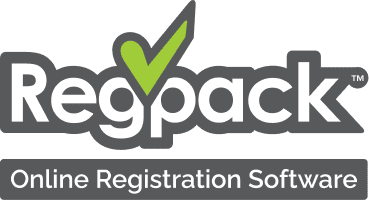At the end of a long workday, you most likely want nothing more than to get home and settle down to relax. If your once-relaxing haven has become your workplace amidst the pandemic, that might be easier said than done. Though you may not be spending your day at the front of a conference table or on the stage of a packed auditorium, you probably find yourself just as exhausted when it’s finally time to call it a day.
As working from home has become the new normal for many, a new experience has come to the forefront. Zoom fatigue is the term for the mental exhaustion caused by unending video calls. Though they may happen at home rather than in the office, virtual presentations can be more draining than in-person presentations because the brain can’t rely on non-verbal cues to process information.
When planning a virtual presentation, consider the challenges that come with an online format and adjust accordingly. With the right tools and technology, you can pull off an engaging presentation and save your audience from Zoom fatigue.
Make it accessible for your audience.
Conferences, camps, and other events that are traditionally done in-person have one major benefit in common: the audience comes to you. When hosting an online event, it’s your job to make the event accessible to your audience, both in terms of affordability and attendance.
Online registration software makes it easy to collect information and payments for the event. Just be sure to price the event appropriately, considering you may not be able to cover as much material online as you can in-person.
Present yourself to your best advantage.
Choose the background location for your presentation wisely to help keep your audience focused. Make sure you have good front lighting and use the Zoom presenter view to minimize on-screen distractions.
Consider your personal appearance as well, since part of captivating your audience involves making a first impression. If health concerns like male pattern baldness or adult acne are bringing down your confidence, look into treatments so you can look and feel your best on camera.
Build a rapport with your audience.
Whether you’re hosting an online training course or meeting with your business management team, it’s important to establish a rapport with your audience at the start. Introduce yourself to the group and, if time allows, engage in a few minutes of casual conversation with your audience. In large groups it may not make sense to have everyone introduce themselves, but you should make an effort to interact with individuals by name throughout the presentation using the participant list in your Zoom window.
Get things going with a bang.
If your audience is disengaged from the start of your presentation, you’re unlikely to capture their interest later. Start with a shocking statistic, a relevant joke, or a short story to grab your audience’s attention and keep up the energy throughout. Give your audience opportunities to respond and react throughout the presentation to improve engagement and to stave off Zoom fatigue.
Set the audience’s expectations.
The secret to a focused and effective presentation is to set your audience’s expectations from the start.
Whether you’re running an online course or facilitating an end of the month meeting, it never hurts to start with a quick agenda or outline to give your audience a roadmap. Let the audience know you’ll be asking questions throughout the presentation and invite individuals to use the raised hand feature to take responses. The chat function can be a valuable tool as well.
Schedule breaks or divide the event into sessions.
After 20 to 30 minutes, your audience’s attention will begin to wander so it’s important to schedule breaks during longer meetings. Invite your audience to get up and stretch or grab a drink of water. You could also use this opportunity to lead a quick group exercise or share another short story to lighten the mood before getting back to business.
For certain events, you may want to divide the presentation into sessions as a means of breaking up the program in a way that makes sense for an online format.
Keep your audience active and engaged.
Hosting a virtual event can be challenging, especially with a long guest list. When you can’t physically interact with your audience in person, it’s harder to keep them engaged. Utilize Zoom features like the chat function to keep your audience involved and integrate polls to create an interactive experience.
Depending on the topic, you might also consider using breakout rooms for small group discussion.
Perfection is an unattainable ideal, so why stress about it unnecessarily? You may never achieve the “perfect” presentation but by following the tips above you can improve your virtual presentation technique to create a valuable and engaging experience for your audience each and every time.


















